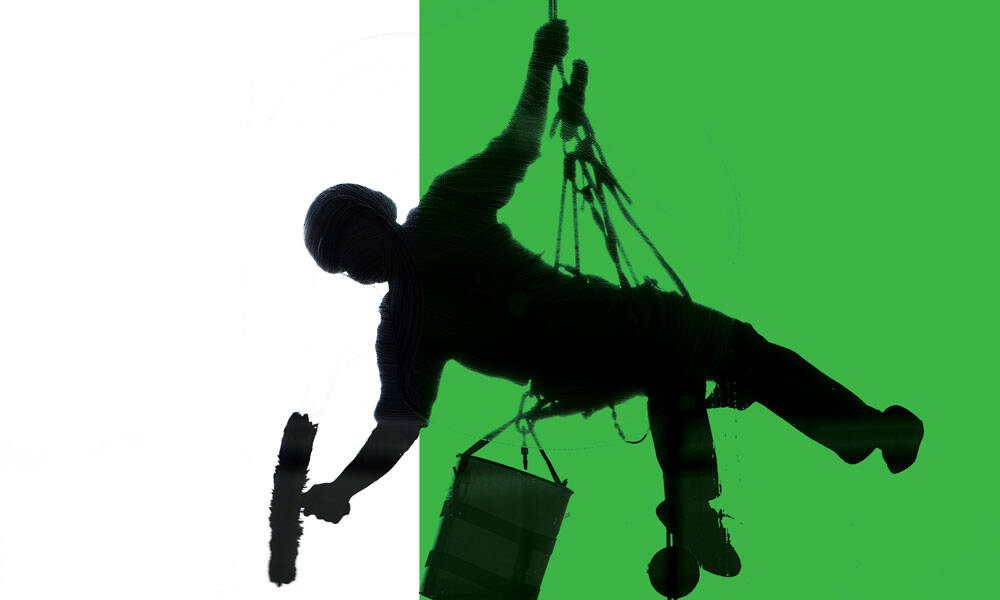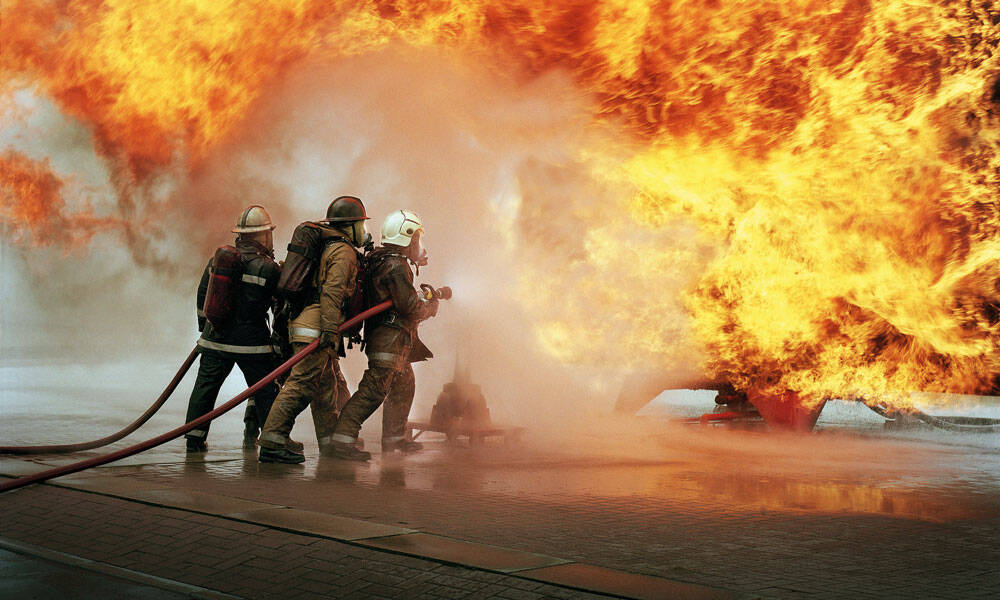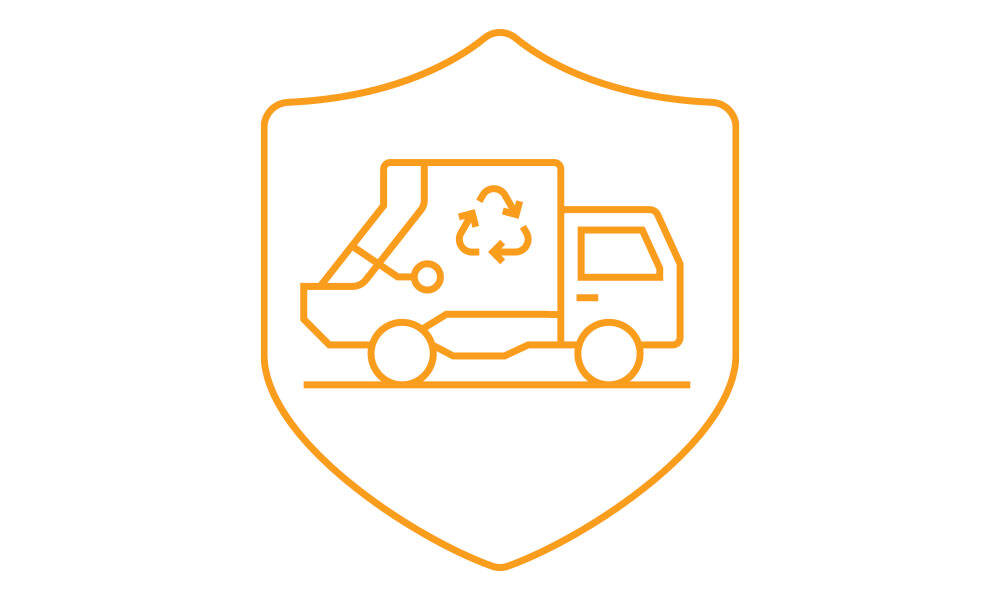
Associations Step Up for Safety Needs
Safer window washing; a system for tracking firefighter exposures; infrastructure that nearly eliminates highway deaths; lifesaving rail technology; protection for recycling and refuse workers.
Zero Fatalities From Falls
Safety • International Window Cleaning Association
While most people would probably find scaling the exterior of a skyscraper terrifying, it’s all in a day’s work for members of the International Window Cleaning Association. Of course, worker safety and adherence to regulations are paramount, which is why IWCA has been in an alliance with the Occupational Safety and Health Administration since 2011.
The partnership with OSHA “has significantly reduced falls from heights in the window cleaning industry,” says IWCA President Paul Collum. “This year, we had zero fatalities from falls—a goal we wish to continue every year with more and more safety initiatives.”
To help accomplish this, IWCA is increasing access to safety training for window cleaners and the companies that employ them. That strategy includes creating courses as new regulations are introduced and opening regional facilities to allow for more hands-on training. In addition, IWCA is introducing online courses that allow for ongoing, year-round safety education. — Samantha Whitehorne

(Alan Thornton/The Image Bank)
Tracking Firefighter Exposures
Safety • International Association of Fire Fighters, International Association of Fire Chiefs, Metropolitan Fire Chiefs Association, International Public Safety Data Institute
Running into a burning building is dangerous, and not just because of the fire. A slew of building materials and consumer products release toxic fumes when burned.
To help firefighters document what they may have been exposed to, the International Association of Fire Fighters partnered with the International Association of Fire Chiefs, Metropolitan Fire Chiefs Association, and International Public Safety Data Institute to create the National Fire Operations Reporting System Exposure Tracker.
The NFORS app allows first responders to log possible exposures and incident details in a secure environment. Accessible even after personnel have retired, the data will be important to helping assess and deal with long-term health problems tied to on-the-job exposures.
In addition to helping the firefighters firsthand, researchers will use the data to better understand on-the-scene exposures, develop new prevention protocols, and better treat occupational diseases. — Rasheeda Childress
Safe and Dry on the Water
Safety • National Association of State Boating Law Administrators
Alcohol is the leading contributor to recreational boating accidents, according to the U.S. Coast Guard. The National Association of State Boating Law Administrators works with law enforcement agencies at all levels to educate boaters and to enforce safe-boating laws through NASBLA’s Operation Dry Water initiative. In 2019, hundreds of law enforcement agencies participated in the July 5-7 Operation Dry Water heightened-enforcement weekend, resulting in 536 arrests for boating under the influence. Since the annual campaign launched in 2009, the number of boating fatalities and injuries with alcohol named as the leading contributing factor has decreased 21 percent, NASBLA says. — Julie Shoop
Smart Infrastructure
Safety • American Road and Transportation Builders Association
In the early 20th century, the American Road and Transportation Builders Association helped build 48,000 miles of interstates, public transit systems, roads, and airports.
ARTBA is working to jumpstart the transportation infrastructure network in the 21st century, too, making it smarter. That means autonomous cars, road sensors to help traffic flow safely, and use of hyperloops—sealed pods in frictionless tubes—to transport people and products.
What will success look like? “Sensors in the road and new design and construction techniques help keep vehicles moving,” says Matthew Jeanneret, ARTBA executive vice president. “The nearly 36,000 annual highway fatalities have largely been eliminated.” — Rasheeda Childress
Lifesaving Rail Technology
Safety • American Public Transportation Association
Positive train control is an advanced technology designed to stop or slow a train before an accident happens. PTC has been developed, tested, and installed in rail systems across the country. The American Public Transportation Association says that all commuter railroads are committed to completely implementing lifesaving PTC by December 2020.
According to APTA, rail is already among the safest travel modes, and commuter rail and intercity rail are 18 times safer than traveling by automobile. — Lisa Boylan

Protecting Refuse Workers
Safety • National Waste and Recycling Association
Nobody wants trash around, so it is crucial to protect the workers who take it away. The National Waste and Recycling Association’s Slow Down to Get Around campaign raises public awareness about the risk that refuse and recycling workers face from careless drivers. And as the COVID-19 crisis descended, NWRA offered safety tips for collectors.
“It’s important to us that we have a workforce that is able to continue to collect waste of all kinds, from curbside collection to regulated medical waste,” during the pandemic, says Brandon Wright, NWRA vice president of communications. “When waste isn’t collected regularly, that is when you can have the spread of disease.” — Rasheeda Childress
(enviromantic/E+/Getty Images Plus)


Comments